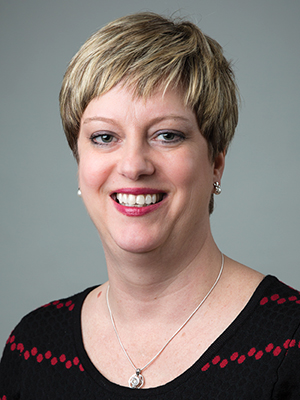 Dr. Beth Hodges
Dr. Beth HodgesDr. Beth Hodges is a family practice and palliative care/hospice physician in Asheboro, N.C., as well as a part-time medical director for HealthTeam Advantage, HealthTeamAdvantage.com. She lives in Asheboro with her husband, three teenagers, three dogs, one cat, and 21 goldfish.
Osteoporosis (which literally means porous bone) is a disease of thinning, weakening bones. While the body constantly absorbs and replaces bone tissue, with osteoporosis, the creation of new bone doesn’t keep up with the daily loss of old bone. This condition can affect anyone but is most common in Caucasian or Asian women after menopause.
Contrary to popular belief, osteoporosis doesn’t cause any pain until bones begin to break; in fact, there are often no symptoms until that first break.
It’s important to know if you’re at risk for or have osteoporosis because there are things you can do prevent and manage the condition, which could protect your quality of life.
Aside from gender and race, the risk factors for osteoporosis include a diet low in calcium, a history of an eating disorder or weight loss surgery, or long term use of certain medications, including corticosteroids (prednisone,) some seizure medications, stomach acid medications (proton pump inhibitors), chemotherapy, or organ transplant medications. Lifestyle choices that can lead to osteoporosis include smoking, heavy alcohol use, and a sedentary (couch potato) lifestyle.
The best way to diagnose osteoporosis is with a bone mineral density test (BMD) which uses a few X-ray beams to measure the thickness of the bones in the hips and lower spine. All women should be screened starting by age 65, sooner if they have risk factors.
Results of a screening test can be classified into one of three groups: normal, osteopenia (or mild thinning), or osteoporosis (which is more severe thinning of the bones). Someone with osteoporosis is at immediate risk of a fracture with minimal trauma involved.
Someone with osteopenia should begin immediate preventative measures and treatments, if possible, and be re-screened every two years. Prevention of osteoporosis involves a diet adequate in calcium and vitamin D, weight-bearing exercise, and changes in lifestyle (such as quitting smoking, avoiding excessive drinking, and being physically active).
Getting enough calcium (1,200 mg per day for women 51 an older) is important. Foods high in calcium include low-fat dairy products, green leafy vegetables, canned salmon, soy products such as tofu, calcium-fortified cereals or juice. Calcium supplements taken by women over 50 years of age should not exceed 1500 mg daily.
Vitamin D improves the body’s ability to absorb calcium. There are a few ways to increase your vitamin D intake. Spend 10-15 minutes, two-three times a week in the sunlight; eat foods like fortified dairy products, salmon, tuna, sardines, egg yolks, mushrooms; and/or take vitamin supplements. Women up to age 70 need 600 international units (IU) of vitamin D per day; 71+ need 800 IUs. Anyone taking a supplement shouldn’t take more than 3000 IUs daily unless specifically instructed by a physician, as too much Vitamin D can result in its own set of issues.
Exercise can include walking, running, or stair climbing, but be sure to do some upper body strengthening as well, to include bones above the waist. Walking while holding some light hand weights will accomplish both goals. Remember, always check with your doctor before starting any new exercise routines.
Treatment for osteoporosis includes many of the preventive measures such as eating a healthy diet and doing weight-bearing exercises, along with medications that can help slow or stop bone loss.
The bottom line is osteoporosis is a significant medical condition that could put you on the sideline of your own life. Don’t be a victim. Get screened, and if needed, get treated.

